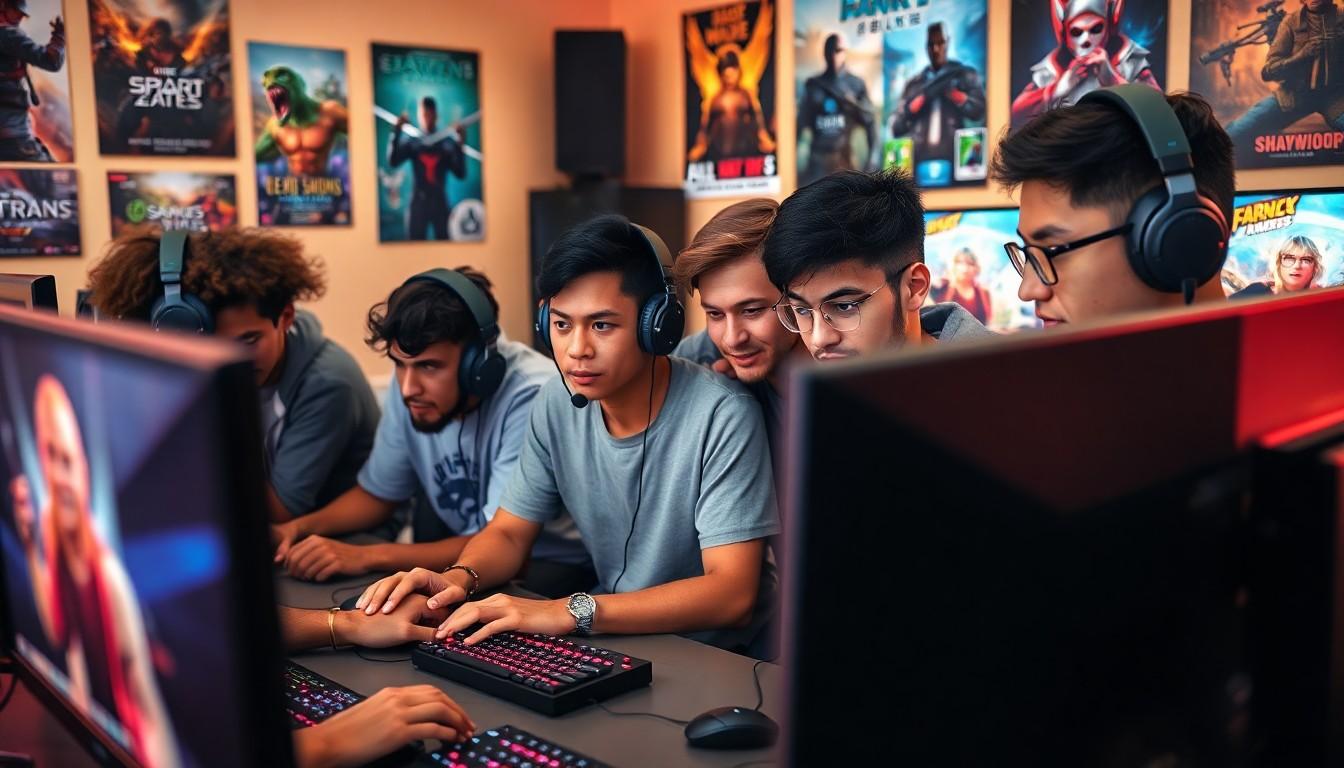In the ever-evolving world of video games, player rankings can feel like a high-stakes game of musical chairs, where only the best get to sit down. Whether you’re a casual gamer or a pro aiming for the top, understanding these rankings is crucial. They’re not just numbers; they’re the digital badges of honor that tell the world who’s slaying dragons and who’s still trying to figure out which button does what.
But let’s be real—navigating the labyrinth of rankings can be as confusing as trying to explain the plot of a complex RPG to your grandma. From skill ratings to tier placements, it’s a wild ride. So grab your controller and buckle up. It’s time to dive into the fascinating world of video game player rankings, where every pixel counts and every point can make or break your gaming reputation.
Video Game Player Rankings
Video game player rankings play a crucial role in the competitive landscape. These rankings reflect a player’s skill level and standing among peers, showcasing their accomplishments. Various metrics contribute to these rankings, such as win-loss records, skill ratings, and performance metrics across different game modes.
Skill-based matchmaking influences how players compete. Players often find themselves placed in tiers based on their performance relative to others. High-ranking players demonstrate consistency and strategy, while lower-ranked players may still develop their skills.
Online leaderboards create a sense of competition, where players can track their progress and strive for higher positions. Games frequently update these rankings to account for ongoing tournaments, seasonal changes, or player adjustments. Regular updates ensure that rankings remain relevant and reflect current player abilities.
Community recognition stems from a player’s rank, leading to opportunities for sponsorships and team placements. Players enjoy pride in achieving higher ranks, as it validates their skills and dedication. Organizations also monitor player rankings to identify potential talents and cultivate competitive teams.
Understanding rankings requires examination of various factors. It helps to consider how different games implement their ranking systems, as each game may emphasize unique aspects. Players must engage with the intricacies of their chosen game’s ranking methodology to appreciate their standing fully.
Factors Influencing Player Rankings
Player rankings in video games depend on multiple factors, reflecting a player’s overall performance and reputation in the gaming community. Understanding these influences provides insights into how rankings develop.
Skill Levels
Skill levels significantly influence player rankings. Higher skill ratings correlate with superior gameplay, often measured through win-loss records in competitive matches. Players who consistently perform well against stronger opponents showcase their skill. Variability exists in skill assessments based on different game modes. Competitive matches typically yield more accurate skill representations, given the stakes involved. Rankings are adjusted regularly to reflect improvements or declines in skill, ensuring they remain relevant and accurate.
Game Genres
Game genres also play a crucial role in shaping player rankings. Competitive games, such as first-person shooters or real-time strategy games, emphasize different skill sets. Rankings in these genres often rely on specific metrics, like kill/death ratios or resource management efficiencies. Each genre has unique criteria that can affect tier placements. For instance, multiplayer online battle arenas prioritize teamwork and strategic play, while role-playing games might focus more on solo accomplishments. Understanding genre-specific ranking criteria helps players strategize and improve their rankings effectively.
Popular Video Game Player Ranking Systems
Video game player ranking systems play a crucial role in showcasing player skill and competitiveness. Various systems exist, each with unique methodologies.
ELO Rating System
The ELO Rating System originated from chess but has gained prominence in video gaming. Players receive ratings based on match outcomes, where a victory increases their score and a loss decreases it. Match history heavily influences these adjustments, reflecting player skill more accurately. ELO encourages strategic gameplay, as players face opponents of similar ratings. It fosters a balanced competitive environment, making it widely adopted in numerous esports titles. Players can see their rank change dynamically, providing immediate feedback on their performance.
Matchmaking Ratings
Matchmaking Ratings (MMR) often serve as a foundation for competitive play in many games. These ratings consider a player’s performance across various matches, adjusting based on wins, losses, and individual contributions. Competitive titles like
League of Legends and
Dota 2 utilize MMR systems, placing players within skill tiers. Higher MMR indicates better performance, enabling players to encounter similarly skilled opponents. The goal remains to create fair and engaging matches. Regular recalibrations ensure that MMR accurately reflects a player’s current skill level. Players frequently check their MMR for motivation to improve and climb the ranks.
The Impact of Player Rankings on Gaming Communities
Player rankings play a significant role in shaping gaming communities. Rankings serve as a direct reflection of skill and dedication, influencing how players perceive each other. Community members often form opinions based on a player’s position on leaderboards. High-ranking players enjoy a certain level of respect and admiration, as their achievements demonstrate competitive prowess.
Many see rankings as motivation to improve their performance. Participating in events that showcase skill levels encourages players to push their limits. Friendly rivalries can develop as gamers aim to surpass each other’s ranks. Alongside this competition, players often share strategies and tips, fostering a collaborative environment where everyone benefits.
Sponsorships and team placements frequently arise from impressive rankings. Players recognized for their skills attract opportunities that may not be available to lower-ranked individuals. Organizations often scout talent based on leaderboard standings, which can lead to professional careers. Establishing connections becomes easier for high-ranking players within gaming communities.
Additionally, player rankings facilitate matchmaking. Games often implement skill-based systems that pair players of similar abilities, promoting balanced competitions. These systems enhance the overall gaming experience and help maintain player engagement over time. Frequent adjustments to rankings ensure they remain current, reflecting real-time performance.
Understanding the impact of player rankings is crucial for gamers. Navigating through the nuances of various ranking systems allows players to strategize effectively. As they work to climb the ladder, they must remain aware of the factors that influence their rankings. Prioritizing skill improvement and community engagement will ultimately create a thriving gaming environment.
Player rankings in video games serve as a vital aspect of the competitive landscape. They not only highlight individual skill but also foster a sense of community among gamers. As players strive for higher positions on leaderboards, they engage in a continuous cycle of improvement and collaboration.
Understanding the intricacies of ranking systems can empower players to refine their strategies and enhance their gameplay. This knowledge not only aids in personal growth but also builds respect and recognition within the gaming community. Embracing the challenge of climbing the ranks can lead to exciting opportunities and a more enriched gaming experience.


